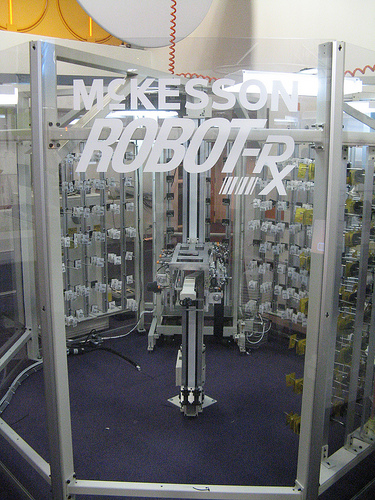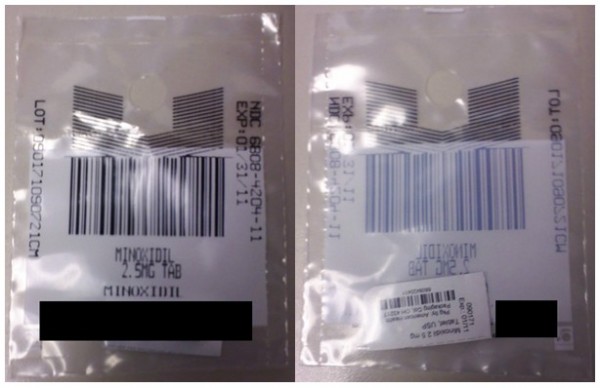Full disclosure, anyone reading this should take it with a grain of salt. I used to work for Talyst as a product manager for their acute care product line, and I’ve recently been involved with a Pyxis Logistics implementation. With that said, forward.
In short, yes, BD Pyxis Logistics (“Logistics) is quite good. BD is doing something that pharmacy has needed for a long time, embracing the concept of “the enterprise†with integration across multiple areas in and out of the pharmacy. BD, as a company, has been busy over the past few years piecing together products to create a cohesive strategy. Someone has been paying attention.
Are they there yet? Not yet, but they are on their way. To paraphrase my brother, they’re currently the worst they’re ever going to be, i.e. their products and strategy are only going to get better and mature over time.
You’ve heard me talk about the four areas of pharmacy many times: standard storage, refrigerated storage, controlled substance storage, and the iv room.
Basic storage are those basic shelving units that most people think of when they walk into a pharmacy. It’s where you’ll find unit-dose and bulk room-temperature items. Logistics is squarely focused on this area of the pharmacy. It works well and, at least in my opinion, does a good job of addressing inventory across multiple pharmacies. Throw in that Logistics is web-based, and it’s compelling.
Refrigerated storage is, well, where you put things when you want to keep them cold. Same as basic storage, only refrigerated. BD doesn’t offer anything specific for this area, but Logistics handles refrigerated items just fine. It basically treats refrigerators the same way it treats static shelving and carousels. It’s just another storage area.
Cleanroom/IV Room is where you’ll find all the supplies for compounding sterile medications. The IV room has been getting a lot of attention lately, but that has nothing to do with inventory management. Most pharmacies treat the IV room as a black hole for inventory, i.e. they lose visibility of their inventory when it crosses the threshold into the land of sterility., BD has had a product called Cato for many years. It’s now called BD Pyxis IV Prep and I’ve always been a fan. Pyxis IV isn’t fully integrated with Logistics, but they’re working on it.
Controlled substance storage is where you’ll find all your opioids, benzodiazepines, and so on. Anything the DEA, Board of Pharmacy, and any other regulatory agency considers a diversion risk. I have a love-hate relationship with controlled substance management. This area is long overdue for improvement. With that said, I’m happy to report that BD is making inroads. The latest version of their CII safe software is integrated with Logistics, meaning no more disparate systems for controlled and non-controlled meds.
What I like about Pyxis Logistics
- Multiple pieces of the pharmacy puzzle. When looking at the BD Pyxis lineup, the four areas of pharmacy are closer than ever.
- Integration that is getting better and better all the time. BD not only has the pharmacy covered — Logistics, CII Safe, IV prep — but think about their dominance in the automated dispensing unit (ADU) market. Integration is hard, but getting ADUs and pharmacy inventory seamlessly talking to one another is something I’ve been pining after for a long time. Â
- Handhelds. BD offers a handheld for Logistics. I haven’t had one in my hands but the device and functionality look good, shortening the inventory gaps even more. Talyst had a handheld device for AutoPharm years ago. Wonder what became of it?
- Good folks to work with. I have nothing but good things to say about the people from BD that I’ve worked with. They want to do a good job.
- Improvements are rapid and obvious. That’s the thing about most companies, they want to improve their products and keep customers happy. Improved products and happy customers equal increased adoption, which in turn leads to more sales, which leads to more money, and so on down the rabbit hole.
What I don’t like about Pyxis Logistics
- Reports and analytics appear weak. The system offers many canned reports and access to the company’s Knowledge Portal, but overall, it feels like they’re behind in this area. From what I’ve seen, it’s just not there. When compared to something like the analytics software from Swisslog — still don’t know the name of the product…. Pharmacy Analytics? I mentioned it here — it feels miles behind. What’s worse is that what I saw at ASHP Midyear back in December doesn’t make me feel any better about it.
- Piecemeal products. It’s obvious what BD is doing. However, buying products and folding them into your portfolio can make things feel like they’re bolted on instead of feeling like they’re an integral part. It’s only going to get better, but one has to be willing to ride through the rough patches to get to the smooth road.
- Lack of product maturity. “Pyxis”, the ADUs, is a very mature product that’s used in thousands of facilities. Logistics and IV Prep, not so much, and it feels like it.
Overall, it seems as though BD is heading in the right direction. It will be interesting to see where the company ultimately goes with their strategy.



